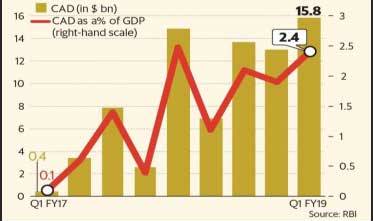Ganesh chathurti
The Philadelphia Ganesh Festival is one of the most popular celebrations of Ganesh Chaturthi in North America,[71] and it is also celebrated in Canada (particularly in the Toronto area), Mauritius, Malaysia and Singapore. The Mauritius festival dates back to 1896,[72] and the Mauritian government has made it a public holiday.[73] In Malaysia and Singapore, the festival is more commonly known as Vinayagar Chaturthi because of the large Tamil-speaking Hindu minority.[74]
Public celebrations of the festival are popular, and are organised by local youth groups, neighbourhood associations or groups of tradespeople. Funds for the public festival are collected from members of the association arranging the celebration, local residents and businesses.[57] The Ganesh idols and accompanying statues are installed in temporary shelters, known as mandaps or pandals. The festival features cultural activities such as singing, theatre and orchestral performances and community activities such as free medical checkups, blood-donation sites and donations to the poor. Ganesh Chaturthi, in addition to its religious aspects, is an important economic activity in Mumbai, Surat, Pune, Hyderabad, Bangalore, Chennai and Kurnool. Many artists, industries, and businesses earn a significant amount of their living from the festival, which is a stage for budding artists. Members of other religions also participate in the celebration.[58][59][60]
At home, the festival preparation includes purchases such as puja items or accessories a few days in advance and booking the Ganesh murti as early as a month beforehand (from local artisans). The murti is brought home either a day before or on the day of the Ganesh Chaturthi itself. Families decorate a small, clean portion of the house with flowers and other colourful items before installing the idol. When the Murti is installed, it and its shrine are decorated with flowers and other materials. On the day of the festival, The ceremonial installation of the clay murti (idol) is done along with chants of holy mantras and pooja including bhajans during a certain auspicious period of the day.
In Goa, Ganesh Chaturthi predates the Kadamba era. The Goa Inquisition had banned Hindu festivals, and Hindus who did not convert to Christianity were severely restricted. However, Hindu Goans continued to practice their religion despite the restrictions. Many families worship Ganesh in the form of patri (leaves used for worshiping Ganesh or other gods), a picture is drawn on paper or small silver idols. In some households Ganesh idols are hidden, a feature unique to Ganesh Chaturthi in Goa due to a ban on clay Ganes idols and festivals by the Jesuits as part of the Inquisition.[42]
According to others such as Kaur, the festival became a public event later, in 1892 when Bhausaheb Laxman Javale (also known as Bhau Rangari), installed the first sarvajanik (public) Ganesh idol in Pune.[29] In 1893, the Indian freedom fighter Lokmanya Tilak praised the celebration of Sarvajanik Ganesh Utsav in his newspaper, Kesari, and dedicated his efforts to launch the annual domestic festival into a large, well-organised public event.[30] Tilak recognised Ganesh's appeal as "the god for everybody",[31] and according to Robert Brown, he chose Ganesh as the god that bridged "the gap between Brahmins and non-Brahmins", thereby building a grassroots unity across them to oppose British colonial rule.[32]
The date for the festival is usually decided by the presence of Chaturthi Thithi. The festival is held during "Bhadrapada Madyahanaa Purvabaddha". If the Chaturthi Thiti begins at night on the previous day and gets over by morning on next day then the next day is observed as Vinayaka Chaturthi. In the consecration ceremony, a priest performs a Prana Pratishtha to invite Ganesh like a guest. This is followed by the 16-step Shodashopachara ritual,[45] (Sanskrit: Shodash, 16; Upachara, process) during which coconut, jaggery, modaks, durva grass and red hibiscus (Jaswand) flowers[46] are offered to the idol. Depending on the region and time zone, the ceremony commences with hymns from the Rigveda, the Ganapati Atharvashirsa, the Upanishads and the Ganesh stotra (prayer) from the Narada Purana are chanted. In Maharashtra as well as Goa, Aartis are performed with friends and family, typically in the morning and evening.
Although it is unknown when (or how) Ganesh Chaturthi was first observed,[26] the festival has been publicly celebrated in Pune since the era of Shivaji (1630–1680, founder of the Maratha Empire).[26] After the start of the British Raj, the Ganesh festival lost state patronage and became a private family celebration in Maharashtra until its revival by Indian freedom fighter and social reformer Lokmanya Tilak.[26]
Though not alluding to the classical form of Ganapati,the earliest mention of Ganapati is found in the Rigveda. It appears twice in the Rigveda, once in hymn 2.23.1, as well as in hymn 10.112.9.[19][20][21] Both of these hymns imply a role of Ganapati as "the seer among the seers, abounding beyond measure in food presiding among the elders and being the lord of invocation", while the hymn in mandala 10 states that without Ganapati "nothing nearby or afar is performed without thee", according to Michael.[19][22] However, it is uncertain that the Vedic term Ganapati which literally means "guardian of the multitudes", referred specifically to later era Ganesh, nor do the Vedic texts mention Ganesh Chaturthi.[23] appears in post-Vedic texts such as the Grhya Sutras and thereafter ancient Sanskrit texts such as the Vajasaneyi Samhita, the Yajnavalkya Smriti and the Mahabharata mention Ganapati as Ganesvaras and Vinayak. Ganesh appears in the medieval Puranas in the form of "god of success, obstacle remover". The Skanda Purana, Narada Purana and the Brahma Vaivarta Purana, in particular, profusely praise him.[24] Beyond textual interpretations, archaeological and epigraphical evidence suggest Ganesh had become popular, was revered before the 8th century CE and numerous images of him are traceable to the 7th century or earlier.
In Metropolitan France, Ganesh Chaturthee remains the main Hindu religious festival.[citation needed] The first Hindu Temple dedicated to Ganesh on Continental France opened in 1985 and the first procession took place in 1995.[citation needed] Since then, every year, the La Chapelle Quarters of Paris are the sight of a major procession with thousands of pilgrims and visitors. The organisation is mainly conducted by the Tamil speaking Sri Lanka community and the pilgrims are mostly Tamil Hindus from Sri Lanka and, to a lesser extent, Hindi-speaking Hindus from Mauritius.[citation needed]
Ganesh Chaturthi (ISO: Gaṇeśa Chaturthī), also known as Vinayaka Chaturthi (Vināyaka Chaturthī), is a Hindu festival celebrating the arrival of Ganesh to earth from Kailash Parvat with his mother Goddess Parvati/Gauri. The festival is marked with the installation of Ganesh clay idols privately in homes, or publicly on elaborate pandals (temporary stages). Observations include chanting of Vedic hymns and Hindu texts such as, prayers and brata (fasting).[3] Offerings and prasadam from the daily prayers, that are distributed from the pandal to the community, include sweets such as modaka as it is believed to be a favourite of Lord Ganesh. The festival ends on the tenth day after start, when the idol is carried in a public procession with music and group chanting, then immersed in a nearby body of water such as a river or sea. In Mumbai alone, around 150,000 statues are immersed annually.[6] Thereafter the clay idol dissolves and Ganesh is believed to return to Mount Kailash to Parvati and Shiva.The festival celebrates Lord Ganesh as the God of New Beginnings and the Remover of Obstacles as well as the god of wisdom and intelligence[8][9] and is observed throughout India, especially in the states such as Maharashtra, Goa, Karnataka, Madhya Pradesh, Andhra Pradesh, Kerala, Telangana, Odisha, West Bengal, Gujarat and Chhattisgarh,[3][10] and is usually celebrated privately at home in Tamil Nadu.[11] Ganesh Chaturthi is also observed in Nepal and by the Hindu diaspora elsewhere such as in Australia, New Zealand, Canada, Singapore, Malaysia, Trinidad and Tobago, Guyana, Suriname, other parts of the Caribbean, Fiji, Mauritius, South Africa[12] United States, and Europe. In Gregorian calendar Ganesh chaturthi falls between 22 August and 20 September every year
In Maharashtra, Ganesh Chaturthi is known as Ganeshotsav. Families install small clay statues for worship during the festival.The Murti is worshiped in the morning and evening with offerings of flowers, durva(strands of young grass), karanji and modaks (jaggery and coconut flakes wrapped in rice flour dumplings).The worship ends with the singing of an aarti in honour of Ganesh, other Gods and Saints. In Maharashtra the Marathi aarti "Sukhakarta Dukhaharta", composed by the 17th century saint, Samarth Ramdas is sung.Family traditions differ about when to end the celebration. Domestic celebrations end after 1 1⁄2, 3, 5, 7 or 11 days. At that time the Murti is ceremoniously brought to a body of water (such as a lake, river or the sea) for immersion. In Maharashtra, Ganeshotsav also incorporates other festivals, namely Hartalika and the Gauri festival, the former is observed with a fast by women on the day before Ganesh Chaturthi whilst the latter by the installation of statues of Gauris. In some communities such as the Chitpavan, and the CKP, pebbles collected from river bank are installed as representations of Gauri.
NewsBalarama JayantiAugust 26, 2018 - 4:28 pmToday is the appearance of Lord Balarama, the elder brother of Lord Krishna. According to the Vaishnava tradition, Balarama is the first expansion of Krishna in the form of Sesa, and everything then eminates from him, and is therefore also known the original Guru. In his other incarnations or avatars he is known as Laxman,








